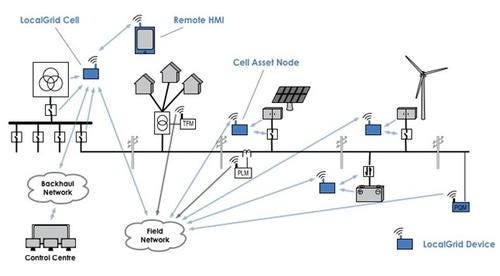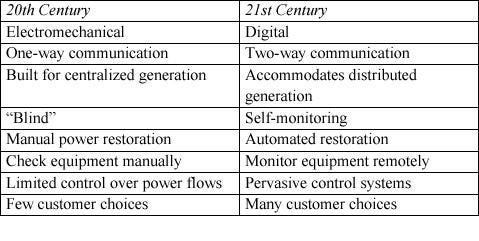NI Controllers Help Modernize Power Grid
September 20, 2013

National Instruments recently announced a new platform for its software-designed cRIO 9068 controller. This new product still uses LabVIEW programming but offers a 4x performance boost by using a 667 MHz ARM dual core processor and new FPGAs. It also provides an ability to reuse existing code, or users can re-compile most existing applications and add support for the Eclipse Development Environment.
One target for the new platform is digital energy production, including, for example, an application developed by LocalGrid Technologies. The development of microgrid and smart distributed power generation solutions is a prime expansion area for automation and control vendors offering off-the-shelf controller options to help utilities move from electromechanical, one-way communication control to more potent digital solutions that incorporate networking and measurement technology.

The key with LocalGrid's eGridOS software is that it allows grid operators unfamiliar with measurement control software tools to develop software and write application-specific algorithms that can be deployed to in-field devices. Even though each Microgrid system uses a different topology and each installation is unique, a combination local grid cells, remote HMIs, and cell asset nodes can be monitored and controlled using a substation controller.
LocalGrid started using the NI cRIO-9076 controller based on a VxWorks real-time OS, and then ported its software to the cRIO-9068. The software is a scalable distributed monitoring and control system including high-speed acquisition, logging, and control with data reduction from distributed nodes up to the operations network. It uses a decentralized control approach that pushes decision making to the remote devices to improve system fault tolerance and reduce the need for a high-bandwidth communication backbone. Custom calculations and analytics within the software can be designed from a centralized location and deployed remotely to the devices.
With continuing advances in microprocessor technology, advanced measurement is one of the application areas that stands to benefit from additional available processing power along with vision systems. Both of these types of systems can be processing and/or communications-intensive, so added horsepower is a significant advantage.
Through the NI platform, LocalGrid engineers are taking advantage of the toolkits for power measurement, communication, and industry certifications available with the platform. The DNP3 (Distributed Network Protocol) is being used along with the NI Electrical Power Suite to perform online analysis and calculation of power signals. These protocols are required for these installations, and help LocalGrid reduce both costs and effort.
Chart 1 compares how technology is being used to change the network architectures and communication approaches used for smart grid applications. For anyone familiar with the level of sophistication in industrial control systems, it's easy to see the opportunities to achieve more flexible control and use monitoring technology more effectively to dramatically affect overall grid performance.

It will be interesting to see how quickly these types of controls make an impact on grid performance. And on a related note, GE and ComEd announced recently that they have signed a $200M smart meter deal with the goal of modernizing the grid in the city of Chicago. GE has been selected to deliver approximately 4 million smart meters from 2013 to 2021.
The meters will help to enable effective two-way communication between ComEd and its customers, and provide customers with hourly data on energy usage. The system will alert ComEd to power outages automatically, without requiring customers to contact the utility, and help pinpoint problems more quickly to restore power faster.
Related posts:
About the Author(s)
You May Also Like

.jpg?width=300&auto=webp&quality=80&disable=upscale)

